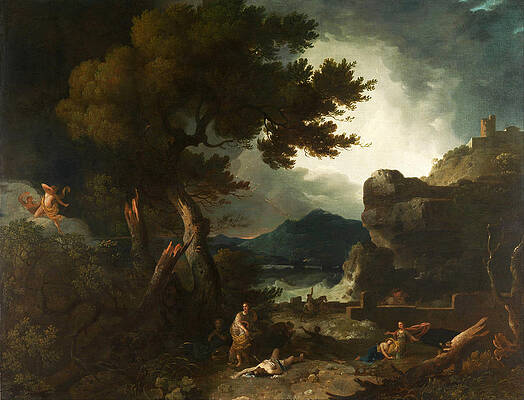.
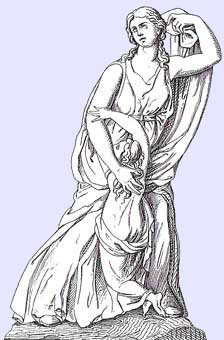
Niobe and her daughter, Uffizi
A mortal woman in Greek mythology, Niobe (Νιόβη), daughter of Tantalus and either Euryanassa, Eurythemista, Clytia, Dione, or Laodice, and the wife of Amphion, boasted of her superiority to Leto because she had fourteen children (Niobids), seven male and seven female, while Leto had only two. Apollo killed her sons as they practiced athletics, with the last begging for his life (Apollo would have spared his life, but had already released the arrow), and Artemis, her daughters. Apollo and Artemis used poisoned arrows to kill them, though according to some versions a number of the Niobids were spared (Chloris, usually). Amphion, at the sight of his dead sons, either killed himself or was killed by Apollo after swearing revenge. A devastated Niobe fled to Mount Sipylus in Asia Minor and turned into stone as she wept, or committed suicide. Her tears formed the river Achelous. Zeus had turned all the people of Thebes to stone and so no one buried the Niobids until the ninth day after their death, when the gods themselves entombed them.
Mount Sipylus has a carving of a female face on it that the locals claimed was Niobe, though it was probably originally intended to be Cybele. The rock appears to weep because it is porous limestone and rainwater seeps through the pores.
Aedon was the queen of Thebes who attempted to kill the son of her rival, Niobe, also her sister-in-law (Aedon was married to Zethus), and accidentally killed her own daughter, Itylus instead and thus, the gods again changed her into a nightingale.
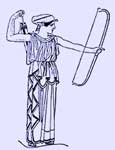

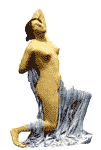
Artemis , slayer of the Niobids , Running Niobid, The Dying Niobid
Homer Iliad, Book 24
Even fair-haired Niobe remembered food,
with twelve of her own children murdered in her home,
her six young daughters and her six strong sons.
Apollo was so enraged at Niobe,
with his silver bow he killed the sons. The daughters
Artemis the Archer slaughtered, for Niobe
had compared herself to lovely Leto,
saying the goddess only had two children,
while she had given birth to many. Even so,
though only two, those gods killed all her children.
For nine days they lay in their own blood,
for there was no one there to give them burial.
Cronos' son had turned the people all to stone.
The tenth day, the gods in heaven buried them.
That's when, worn out with weeping, Niobe 0
had thoughts of food. And now, somewhere in the rocks
in Sipylus, among the lonely mountains,
where, men say, the goddess nymphs lie down to sleep,
the ones that dance beside the Achelous,
there Niobe, though turned to stone, still broods,
thinking of the pain the gods have given her.
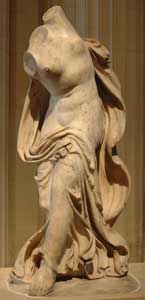
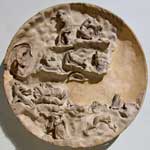
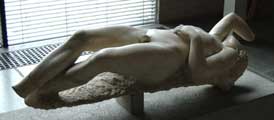
Apollo and Diana Killing the Children of Niobe, Pierre-Charles Jombert
Apollo and Diana Punishing Niobe by Killing her Children, Abraham Bloemaert
The Destruction of Niobes Children, Richard Wilson
Destruction of Niobes Children, Crescenzio Onofri
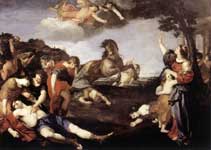
The Massacre of the Niobids, Andrea Camassei
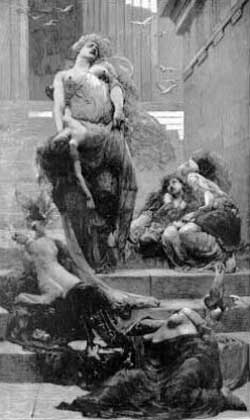
Niobe by Solomon Joseph Solomon (1860-1927)
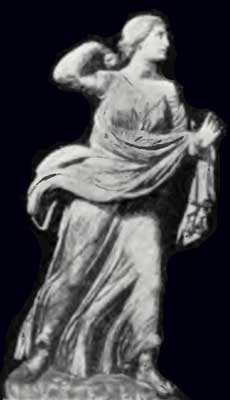
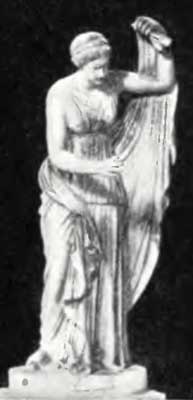

Sculptures from the Niobe Group Uffizi Gallery Florence
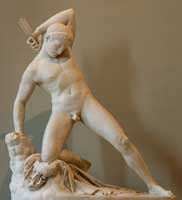
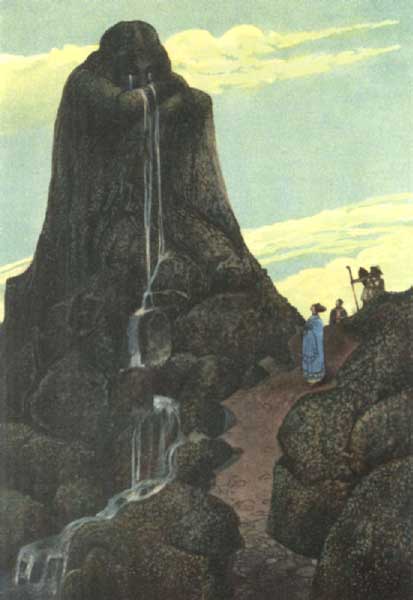
Niobe weeping for her children, Logan Marshall, Myths and Legends of All Nations...
Niobe ,1923, Karoly Patko (1895 - 1941)
Children of Niobe, 1954 , Stanley William Hayter (1901-1988)
Myth in Marble
See also : Greek Mythology. Paintings, Drawings
Greek Mythology Index
A - B - C - D - E - F - G - H - I - J - K - L - M -
N - O - P - Q - R - S - T - U - V - W - X - Y - Z
Α - Β - Γ - Δ - Ε - Ζ - Η - Θ - Ι - Κ - Λ - Μ -
Ν - Ξ - Ο - Π - Ρ - Σ - Τ - Υ - Φ - Χ - Ψ - Ω
| Ancient Greece
Science, Technology , Medicine , Warfare, , Biographies , Life , Cities/Places/Maps , Arts , Literature , Philosophy ,Olympics, Mythology , History , Images Medieval Greece / Byzantine Empire Science, Technology, Arts, , Warfare , Literature, Biographies, Icons, History Modern Greece Cities, Islands, Regions, Fauna/Flora ,Biographies , History , Warfare, Science/Technology, Literature, Music , Arts , Film/Actors , Sport , Fashion --- |
Retrieved from "http://en.wikipedia.org"
All text is available under the terms of the GNU Free Documentation License



